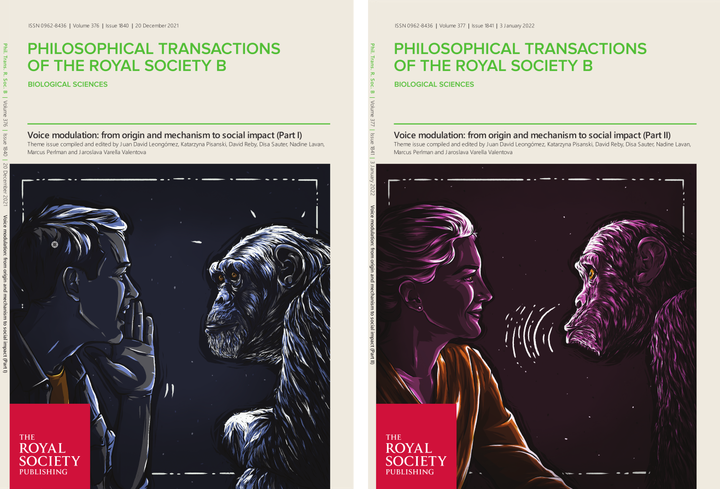Voice modulation: from origin and mechanism to social impact [Theme issue]

Cover art: © Roza Kamiloglu (Amsterdam Interdisciplinary Center for Emotion, University of Amsterdam)
2-part theme issue on for Philosophical Transactions of the Royal Society B: Biological Sciences.
About this issue
The voice is a powerful social tool. In many species, individual differences in nonverbal vocal parameters like pitch and timbre communicate speaker traits, from age and sex to social status. We know much less about the role of dynamic voice changes in nonverbal communication. When, how and why did vocal control evolve? What neural, anatomical, and sociocultural factors shape its development and use in humans and other animals? How does voice modulation influence listeners’ perceptions, or predict social and mating success? With these questions in mind, this two-part issue showcases the diverse functions of voice modulation in human and nonhuman nonverbal communication, from signalling motivation and emotion, exaggerating biological traits like body size and masculinity, to enabling song and musicality across cultures.
I edited this 2-part theme issue together with Kasia Pisanski, David Reby, Disa Sauter, Nadine Lavan, Marcus Perlman, and Jaroslava Varella Valentova.
Part 1 - Open
Part 2 - Open
Articles in which I am an author: